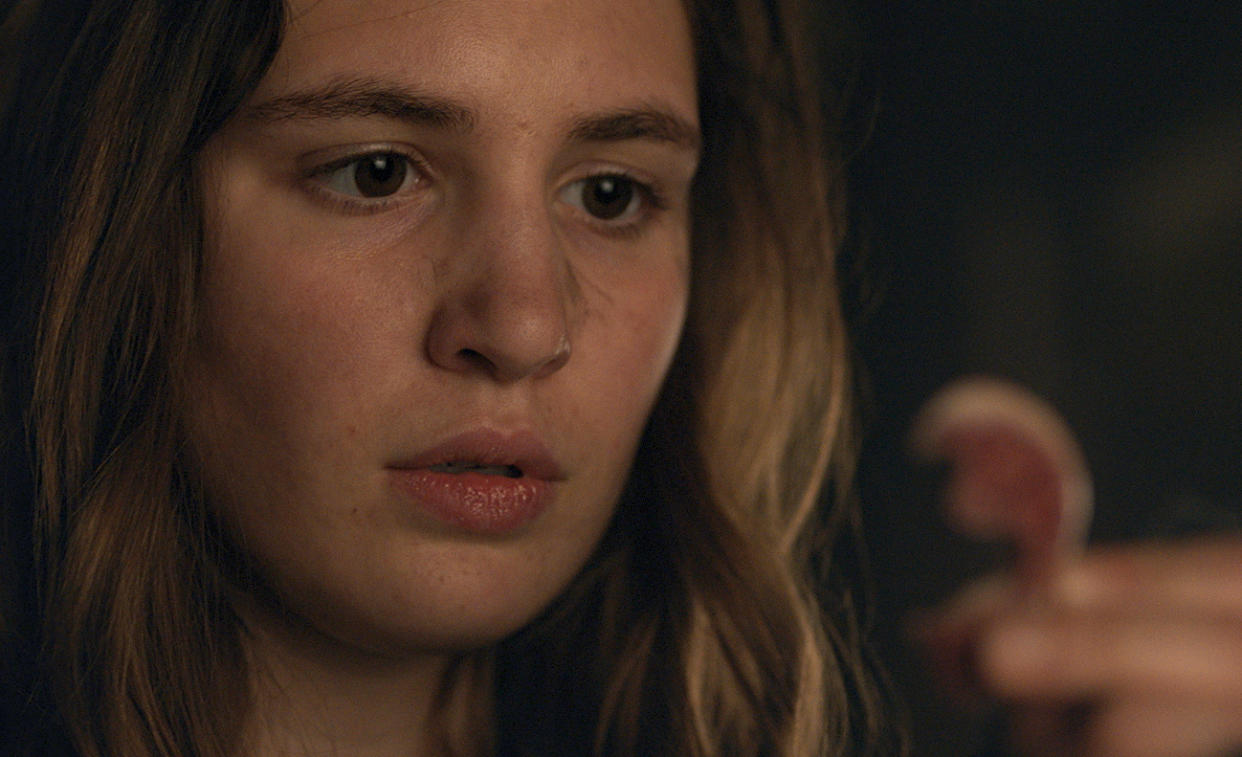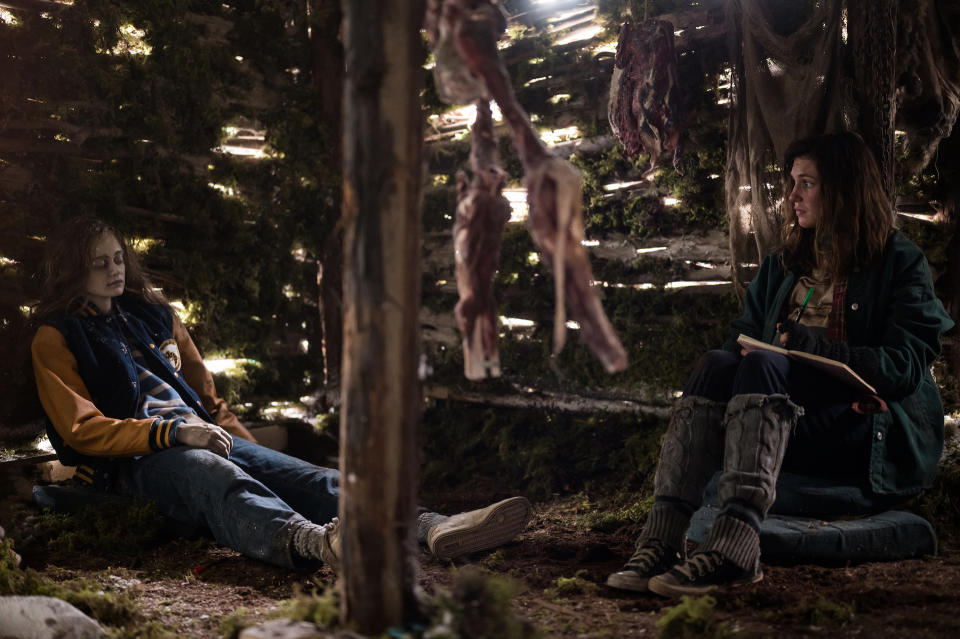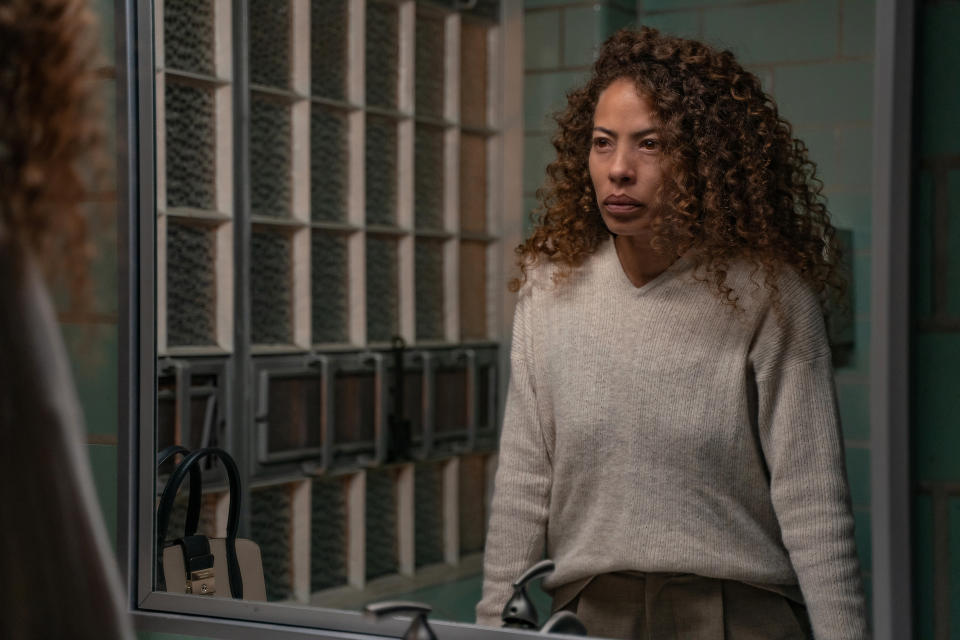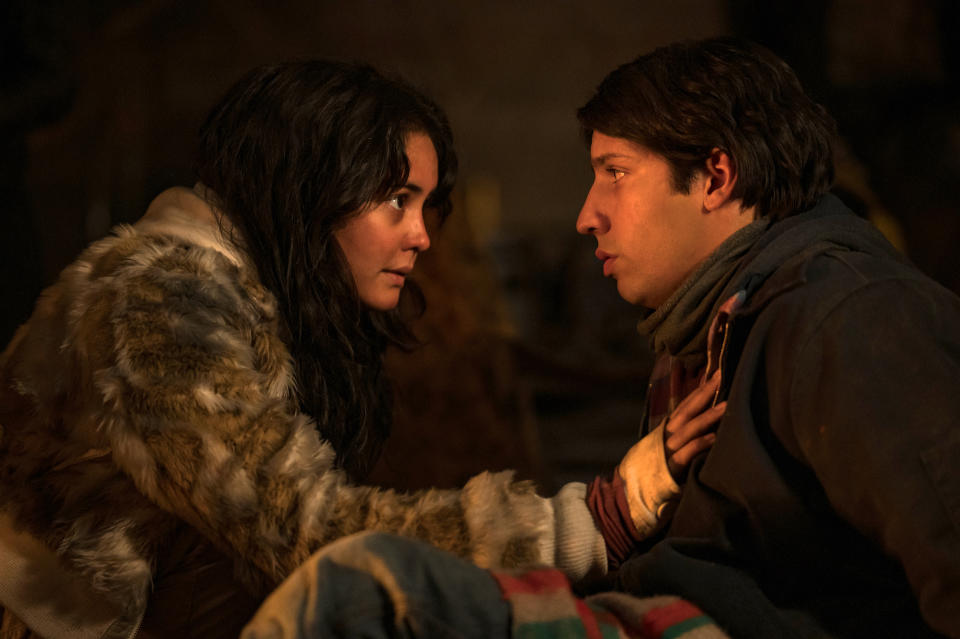The ‘Yellowjackets’ Should Talk to Someone: Mental Health Experts Weigh In

No one on “Yellowjackets” is okay.
It seems harsh, but who would expect the teen survivors of a plane crash, marooned in the wilderness, to turn out fine? The ones who didn’t die resorted to hunting and eating their own teammates — and that’s just what we know so far.
More from IndieWire
When someone experiences shock, like a plane crash, the body goes into survival mode, clinical psychologist Dr. Robin Gibbs told IndieWire. The “thinking brain,” which handles problem solving and judgment “kind of goes offline.”
“It’s sort of like the old story of mothers able to lift up a car if their child is stuck underneath,” she said. “You don’t think your way through it; this other part of the brain sort of takes over.”
After the crash, characters on “Yellowjackets” don’t really process what happened to them because it’s still happening. It’s one shock after another, each stressor piling on top of the last. With horrifying incidents occurring in rapid succession, Gibbs said, the emotions associated with those events don’t necessarily go away. They are stored elsewhere in the mind, leading to “numbness and difficulty making decisions, or behaving in a typically rational way.”
As the Yellowjackets continue to weather impossibly strenuous situations, mental health therapist Jayta Szpitalak said that the nature of their fears and anxieties shifts — and becomes more difficult to handle through traditional therapy techniques.
“It really does manifest into your brain differently,” she told IndieWire. “When you’re having thought-based anxieties, that’s called top down, and that’s really effective with psychotherapy. You can rationalize, and logic appeals to that type of anxiety. But when you’re having anxiety from a trauma event, that’s more fear-based. You actually aren’t processing the information, cerebrally. You’re not intellectualizing it.”

Kailey Schwerman/SHOWTIME
With most TV shows, viewers can grasp a character’s true nature to the point that they’re comfortable expressing how someone would or should behave. “They wouldn’t do that” or someone acting “out of character” are phrases borne of familiarity and equilibrium, but “Yellowjackets” is the rare show to offer neither. Is adult Shauna (Melanie Lynskey) acting out of or in character when she seduces her husband in the studio of the man she murdered? Is teen Shauna (Sophie Nélisse) hanging out with a corpse as unbalanced as her teammates think? Are either of these even the real Shauna, or did that person figuratively die in the crash — effectively disappearing after Episode 1?
“If you think about anyone who’s had to sustain that kind of prolonged stress — often people don’t,” said Gibbs, who specializes in trauma. “The people who do have some kind of internal capacity [or] resources that allow them to cope and continue to survive.”
As IndieWire’s Ben Travers noted in his review of Season 2, “Yellowjackets” really leans into hallucinations — a time-honored TV tradition of visual storytelling, but in this case also potentially as a way of illustrating characters’ deteriorating mental states. In real life, Gibbs said hallucination is symptomatic of “stress beyond what someone can cope with,” especially for the teens in the wilderness, which Szpitalak noted could also stem from depression and grief.
“Starvation wreaks havoc on psychological functioning,” Gibbs noted, pointing to the ongoing Season 2 storyline that food stores are low. “[Hallucination] is a technique, I’m sure, for the show, but it really is a way to express what happens under those extreme circumstances.”
Sam McMillen, a psychiatry resident at Harvard University, explained that hallucinations emerge in various psychotic disorders, but could also be a form of hypervigilance — constantly perceiving safety threats based on previous experience (often seen in combat veterans).
“What would be clinically addressed would be: What is it that’s putting them in a state of feeling unsafe or feeling hypervigilant against past threats or things that represent past threats?” he said. “You might perceive a wolf as as a bizarre hallucination of an animal, but if it represents feeling targeted or represents something that was violent or aggressive, it might suggest that that’s something that you’re feeling emotionally unstable from — like you need to be prepared for that aggression to happen again.”

Colin Bentley/SHOWTIME
Season 2 alone has heralded the arrival of wilderness winter, with Jackie’s (Ella Purnell) dead body frozen because she can’t be buried in the frozen ground. As the characters focus solely on surviving — temporarily abandoning all rescues efforts just so they can live to see spring — they find unique ways to cope. Misty (Samantha Hanratty) makes a new friend; Shauna talks to Jackie’s body and does her makeup; Taissa (Jasmin Savoy Brown) keeps sleepwalking into the night; and many of the rest casually endorse Lottie’s (Courtney Eaton) growing interest in blood sacrifice.
“Sometimes if you’re faced with such an extreme trauma event, your mind can absolutely try to justify it to yourself in some incredible ways,” Szpitalak said. “You can manifest an entire backstory to try to make you feel comfortable with it… when people lie a lot, they can start believing their lies — it’s similar to that. If you’re having a trauma event and it’s so extreme… you fill in the gaps of that story to make yourself feel better.”
Not only are the girls starving and malnourished, but the baseline uncertainty of their day-to-day also tampers with bodily systems. “Even the hardiest and the healthiest of us,” Gibbs said, like these young athletes, cannot sustain living that way.
Through the course of the show, more and more characters appear to seek comfort in Lottie’s rituals, which start to mirror religious or spiritual practices (and show up in the cult she runs as an adult).
“This feels like it’s born out of a need for hope,” Szpitalak said. “When you are feeling a sense of loss and you don’t have any answers… creating rituals and creating that community might help you make sense of the situation that’s nonsensical.”
McMillen agreed, noting that traumatic experiences are, at their core, unexpected, and Lottie’s growing influence could stem from a need for trust in the post-acute state of trauma. “Mysticism and things that come from it can help alleviate that distress around what was unexpected,” he said. “You would sort of be wanting to [make] yourself vulnerable and trust someone else, just to start reestablishing that interpersonal dynamic,” he said.

Kailey Schwerman/SHOWTIME
Viewers don’t know much about how the Yellowjackets coped once they were rescued, other than that Lottie was institutionalized by her parents and subjected to electroshock therapy. Treatment varies based on the individual, but Gibbs said she would likely start with a trauma patient like these ones by breaking down the events they experienced — like focusing on the plane crash itself, the first night, Doomcoming, etc.
“If you do it in big pieces, it overwhelms their system and they shut down,” she explained. “It’s kind of like a log jam. If you clear a path, the system can naturally take over a bit and do some of the work to help digest it. Then you do another bit, and then you digest that, and then you do another bit — and over time, you can really see how things that were so present and and powerfully triggering kind of quiet down a bit.”
This can be part of EMDR (Eye Movement Desensitization and Reprocessing), which both Gibbs and Szpitalak mentioned explicitly. For stressful situations, Szpitalak pointed to breathing exercises that are often recommended for fear and anxiety because they automatically calm the body down.
“If you have a calming breath, you’re going to invite a calming feeling,” she said. “If you can mindfully and strategically deepen your breath, deep breathe from your diaphragm and slow that process down, then you will invite the corresponding emotion into your system as well.”
The problem, of course, is that none of the “Yellowjackets” characters are following typical mental health protocol in the wilderness (“I hate that,” said Gibbs) — whether that’s breathing, movement control, or keeping a log of specific incidents and triggers — which makes the psychological toll on their adult selves even more believable.
Ahead of the series premiere in March, the cast told IndieWire that audiences should be worried about everyone, and that doesn’t appear to be changing any time soon.
New episodes of “Yellowjackets” premiere Fridays on streaming and Sundays on-air.
Best of IndieWire
Sign up for Indiewire's Newsletter. For the latest news, follow us on Facebook, Twitter, and Instagram.

